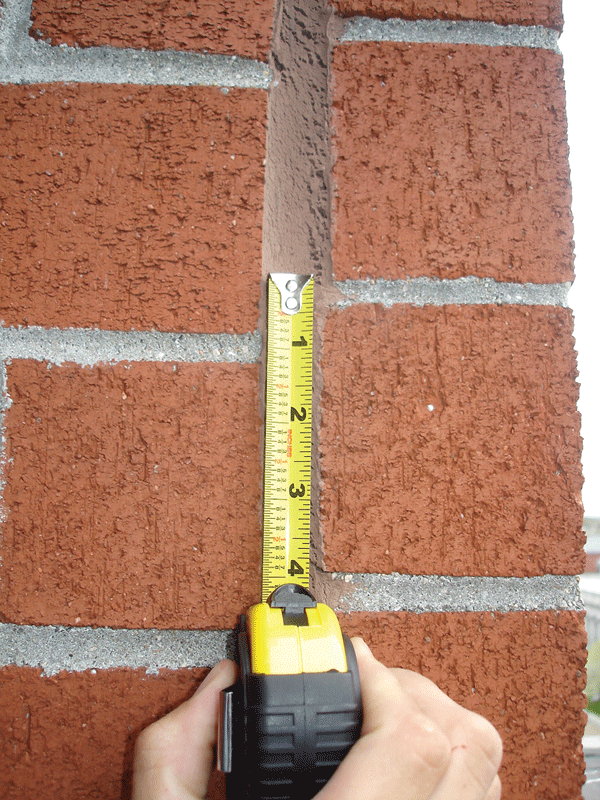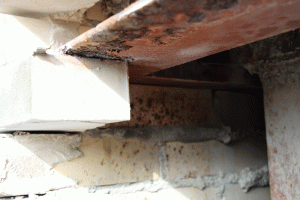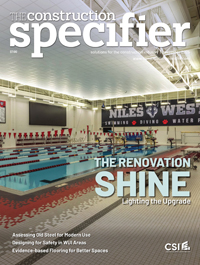Growing older, growing taller

Unlike natural stone, concrete masonry, or calcium-silica brick (see “Failures” October 2024), clay masonry units will experience irreversible expansion over time as the fired clay absorbs moisture from the ambient environment. For practical purposes, a brick or terra cotta unit is at its smallest in-service dimension on the day it is installed new in a wall.
Much of this expansion occurs within the first 10 years after the brick is fabricated. The degree of expansion depends upon the clay materials used and the firing temperature during brick fabrication, but the value of 5 × 10-4 mm/mm (in./in.) can be used to estimate the ultimate expansion of a brick veneer. Based on average floor-to-floor heights in commercial or institutional construction, moisture expansion of brick would be expected to amount to approximately 2 mm (0.08 in.) per building story.
While this may seem like a small dimension, it can result in significant displacement of the masonry, particularly in multistory buildings. For example, a 16-story apartment building on the East Coast was constructed in the early 1980s using a brick and concrete masonry composite wall. A control joint was appropriately included in line with the edge of precast concrete balcony slabs at the load-bearing piers that supported balconies. The structure confined the brick veneer between successive balcony slabs, while the brick veneer at the face of the wall was free to expand. Over the height of the building, the cumulative clay expansion resulted in some startling misalignment of mortar joints across the control joint (Figure 1). In other locations, where the confined brick masonry between balcony slabs was toothed into the adjacent wall and movement could not occur, severe cracking resulted.

In another example, the original architect of a circa 1970 office building in the Midwest appropriately included relieving angles at each floor level, with the drawings indicating that a 10 mm (0.37 in.) joint should be left clear of mortar at the underside of each angle. In the original design, the relieving angles were intended to fully support the gravity load of the brick veneer at each floor level without load transfer to the floor below. Unfortunately, an open joint of the specified dimension was not constructed in the as-built condition. Over time, expansion of the clay brick of the veneer, combined with some slight corrosion on the underside of the steel relieving angles, resulted in the bottom of the angle being in contact with the masonry below or separated by a 1.5 mm (0.06 in) gap at most (Figure 2). Where the relieving angle contacted the masonry below, gravity loads and other loads were inadvertently transferred from one floor to the next level below, resulting in cracking and displacement of the brick veneer at the ground floor.
The effect of clay expansion is independent of and additive to movement due to cyclical temperature changes, building deflection, or other movements. Therefore, the designer must consider the cumulative effect of these movements when positioning and sizing expansion joints. Kenneth Itle, AIA, is an architect and associate principal with Wiss, Janney, Elstner Associates (WJE) in Northbrook, Ill., specializing in historic preservation. He can be reached at kitle@wje.com.
Kenneth Itle, AIA, is an architect and associate principal with Wiss, Janney, Elstner Associates (WJE) in Northbrook, Ill., specializing in historic preservation. He can be reached at kitle@wje.com.
The opinions expressed in Failures are based on the authors’ experiences and do not necessarily reflect that of The Construction Specifier or CSI.


